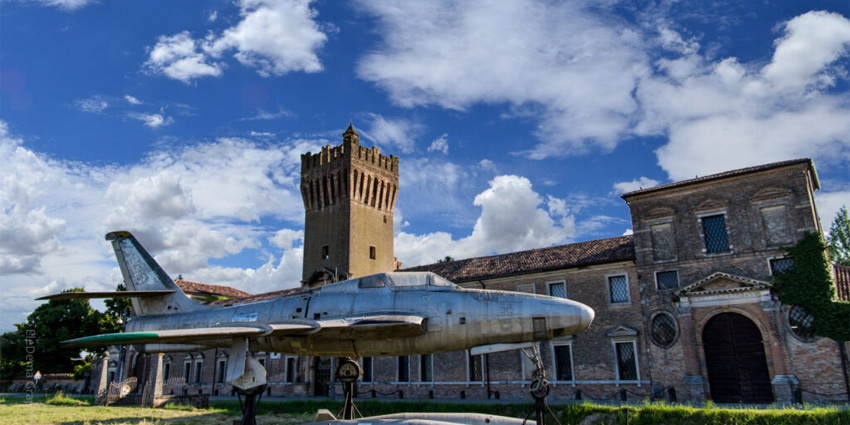
The Museum of Air and Space in San Pelagio: A Heritage of History, Ingenuity, and Architecture in the Venetian Countryside
In the heart of the Padua countryside, among gentle hills and quiet rural roads
in the municipality of Due Carrare, lies a place capable of fascinating, educating, and surprising: the Museum of Air and Space. Housed within the historic Villa Zaborra, also known as the Castle of San Pelagio, this aviation museum is a perfect blend of flight history, architectural heritage, and the surrounding Venetian landscape.
Officially inaugurated on September 20, 1980, the museum stands out for its cultural and scientific significance. It is one of the few institutions in Italy entirely dedicated to the evolution of human flight, from early Renaissance concepts to the most advanced space missions. What makes it truly unique is the setting: an 18th-century Venetian villa, once a noble residence, now transformed into an exceptional exhibition space, harmoniously integrated with its natural environment.
Villa Zaborra and the Castle of San Pelagio: A Setting of Elegance and Historical Memory
Villa Zaborra showcases the refined elegance typical of Venetian country estates, with a central body dominated by a medieval tower and flanked by arcaded wings and formal gardens. The architecture retains many original features, with carefully restored rooms that reflect the villa’s noble past. Walking through the interior is a true journey through time, enriched by museum collections that blend seamlessly into the historic ambiance.
One of the most famous historical events connected to San Pelagio is Gabriele D’Annunzio’s flight over Vienna, which took place on August 9, 1918. The mission departed from this very site: the poet and aviator, together with a team of Italian pilots, flew over the Austro-Hungarian capital dropping propaganda leaflets. Today, this symbolic event is commemorated with detailed exhibits, original documents, photographs, and memorabilia, helping visitors understand its historical and cultural significance.
The Museum Collection: The Story of Flight Across Eras and Human Imagination
The museum’s exhibition route unfolds through several thematic rooms, organized chronologically and conceptually. It begins with early theories and inventions related to flight, including machines inspired by Leonardo da Vinci, and moves through the era of hot air balloons, early airships, and eventually the motorized aircraft that shaped the 20th century.
On display are scale models, life-sized replicas, flight instruments, uniforms, archival materials, and multimedia presentations, creating a truly immersive experience. A particularly engaging section is dedicated to space exploration, highlighting early satellites, the moon landing, and modern interplanetary missions.
The museum aims to combine scientific rigor with accessibility, offering an educational and engaging experience for visitors of all ages. Its content is designed to appeal to the general public as well as students, researchers, and aviation enthusiasts.
The Gardens and Outdoor Spaces: A Museum in the Open Air
Beyond the interior exhibitions, the museum expands outdoors with wide historic Italian-style gardens, green labyrinths, educational play areas, and themed open-air installations. These external areas enhance the visitor experience, allowing guests to further explore the theme of flight in a peaceful and well-kept natural setting.
The gardens feature artistic and educational installations, interactive learning areas for children, and reproductions of historic aircraft. The integration of nature, history, and technology makes the San Pelagio museum an ideal destination for a full day of culture and outdoor enjoyment.
A Museum within a Region Full of Discovery
The Museum of Air and Space is strategically located just a few kilometers from cultural cities such as Padua and Monselice, near the Euganean Hills and the renowned thermal towns of Abano and Montegrotto Terme. It is an ideal destination for those wishing to enrich their stay with a cultural, educational experience in a serene and charming setting.
The area of Due Carrare, with its network of bike trails, local wineries, historic villas, and countryside hospitality, offers an authentic and relaxing environment. The museum is part of a broader cultural itinerary that highlights the connection between technological innovation, historical memory, and the natural beauty of the Veneto region.




